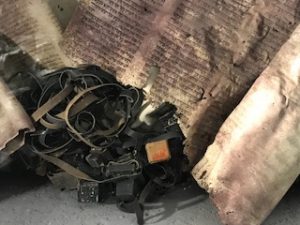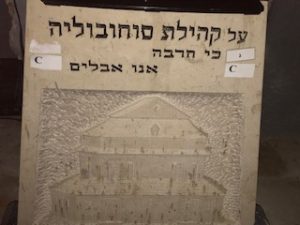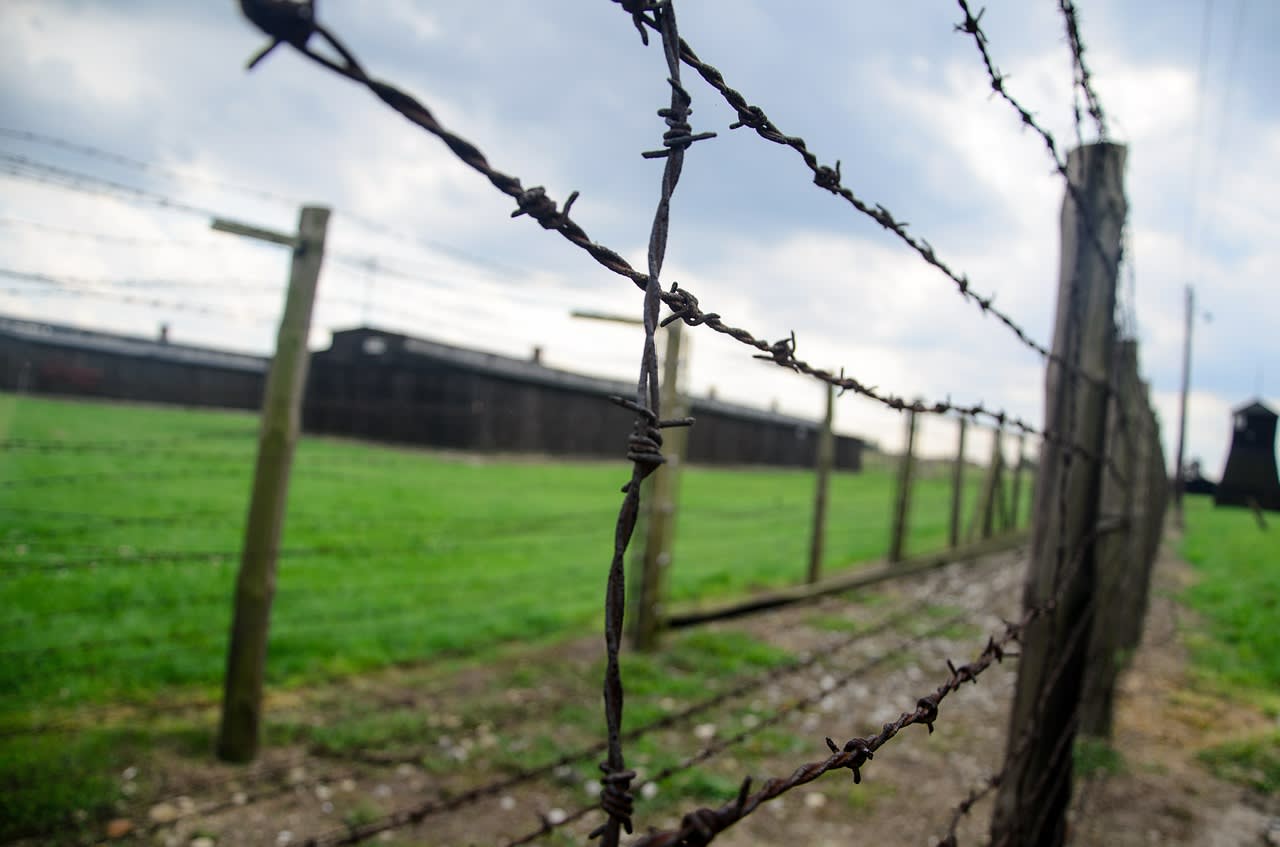Last week, my wife and I visited Martef HaShoah or Chamber of the Holocaust, a small Holocaust museum located on Mount Zion in Jerusalem, opposite the Kever of King David. Appropriate to visit at any time, it was especially so during the Nine Days. And what an unlikely place to have found inspiration and even a message for today’s educators and youth.
 Martef HaShoah is Israel’s first Holocaust museum. It was founded in 1948-49, mere seconds after the Holocaust and within nanoseconds of the establishment of the State of Israel. Survivors, still emotionally raw from what they witnessed and endured, came to Israel and sought to memorialize the unfathomable that had transpired and was destroyed. Its proximity to Kever David HaMelech connotes Messianic redemption as we wait, long and pray for Mashiach ben David.
Martef HaShoah is Israel’s first Holocaust museum. It was founded in 1948-49, mere seconds after the Holocaust and within nanoseconds of the establishment of the State of Israel. Survivors, still emotionally raw from what they witnessed and endured, came to Israel and sought to memorialize the unfathomable that had transpired and was destroyed. Its proximity to Kever David HaMelech connotes Messianic redemption as we wait, long and pray for Mashiach ben David.
This small museum includes several exhibition rooms and passages together with a large courtyard. Tombstone-like plaques, inscribed in Hebrew, Yiddish and English, memorializing more than 2,000 communities destroyed during the Holocaust cover the walls. These plaques were sponsored by survivors from those communities. Many survivors have held memorial services in Martef HaShoah on the anniversary of their town’s destruction. In the center of the larger rooms is a black marble-looking slab inscribed with the names of the infamous concentration camps underneath which are ashes from a concentration camp’s crematorium.
A sprinkling of glass cases throughout Martef HaShoah display different artifacts, including a bloodstained Torah scroll, purses, shoe soles, drums and wallets made from the Klaph (parchment) of Sifrei Torah, a prisoner uniform from Auschwitz, soap made by the Nazis from human fat, and more. Most jarring to me was the fitted jacket tailored from a Torah scroll. G-d forbid anyone should have such ideas today.

The contents of a display case adjacent to the courtyard inspired my wife and me. It contained a handwritten Siddur or prayer book from the Buchenwald concentration camp. The handwriting was magnificently neat and consistent, printed with vowels. There were some words crossed out as the writer must have written it from memory.
So many questions zoomed through our minds. Who was this Jew? Who was his family? How did he obtain paper? A writing instrument? Where was the Siddur stored? Who used it? The Mesiras Nefesh and risk to his life to undertake this project is an understatement. Love for our Torah and Mesorah emanate from this special Siddur. The “facilitator” or scribe made sure that our connection to the Almighty through the power of prayer continued even within the Gehinnom of the Nazis’ death overpowered machine that appeared to be unstoppable and invincible.
This Jew and his Siddur personify Emuna and Bitachon. From the depths of despair is a living Kiddush HaShem that roots us to Har Sinai and continues our relationship with HaShem unbroken, despite the vicissitudes, throughout the millennia.
May the scribe’s memory be for an eternal blessing.
You must be wondering – Why is a pediatrician writing about this?
The Kiddush HaShem is enormous and is timeless. But the takeaway in 2018 is the inspiration from which we parents can learn and share with our children about values and life.
Patients and parents speak to me about a host of topics. One of the hot ones is the lack of inspiration in today’s world, the frum community included. People are going through the motions of religious observance without understanding what they are doing and why they are doing it. They’re disenchanted with everything, particularly the educational system. It’s sad because we see people of all ages uninspired, off the derech, going about life aimlessly. The repercussions are almost endless.
Contrast this scenario with our nameless, faceless Jewish scribe who, in the midst of a death camp, found within himself the desire for the ritual of prayer. And he made this ritual available to all. Such ritual leads to connection with HaShem. May he be enjoying a lichtige Gan Eden for what he continues to accomplish.
While not uncommon, documented stories like this deserve more prominence in our lives. For example, there are primary sources available of the religious questions posed to Rabbi Ephraim Oshry (1914-2003) who was a rabbi in the Kovno ghetto. Miraculously, he survived the Shoah. His writings detail not only the Nazis’ twisted minds and how they sought our extermination and collaborated with the Lithuanians to that end. Yet despite being starved, beaten and on the constant edge of death, Jews sought to keep HaShem’s Torah and commandments as evidenced by the religious questions posed to Rav Oshry and how he answered them.
Perhaps our schools and other educational programs should learn some of these primary sources. Our middle school and high school age children and adults would experience the deep longing of their ancestors to connect with the Infinite and to know that being a Jew is the greatest thing in the world. The foundation that would be laid would be strong enough to support an edifice of enormous proportions. Imagine what such a living edifice could accomplish in this world.
From seeming despair emerges inspiration.
What’s your dream?
Dr. Hylton I. Lightman is a senior statesman among pediatricians, an internationally-recognized authority and diagnostician, a public speaker, expert witness and go-to resource for health issues in the Orthodox Jewish community and beyond. Originally from South Africa, he started his current practice, Total Family Care of the Five Towns and Far Rockaway, PC in 1987. Dr. Lightman is a board-certified pediatrician and fellow of the American Academy of Pediatrics (FAAP). Dr. Lightman is a clinical assistant professor of pediatrics at Hofstra Northwell School of Medicine. In addition, he is actively involved in teaching pediatric and family nurse practitioners through Columbia University, Pace University, Lehmann College, and Molloy College, as well as mentoring physician assistants through Touro College. Read more here.
The words of this author reflect his/her own opinions and do not necessarily represent the official position of the Orthodox Union.
